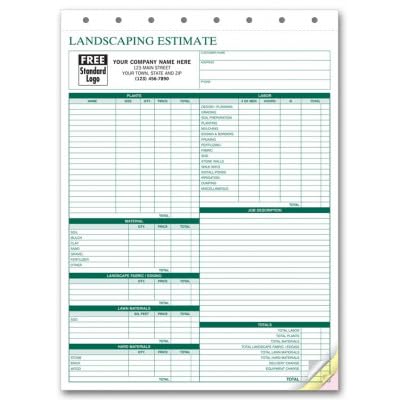If you’re planning to enhance your property with landscaping, you may be wondering if you need a permit. The answer is not always straightforward, as it can vary depending on your location and the scope of your project. Understanding the permit process and navigating local ordinances can be overwhelming, but it’s important to ensure that you’re following the law and keeping your property safe.

Landscaping permits are typically required for major projects that involve adding structures, such as retaining walls, decks, or outdoor kitchens. However, even smaller projects such as tree removal or planting may require permits in certain cases. It’s important to research your local ordinances and consult with professionals to determine if your project requires a permit. Not obtaining the necessary permits can result in legal and financial consequences, as well as safety risks.
Key Takeaways
- Landscaping permits are typically required for major projects that involve adding structures.
- Even smaller projects such as tree removal or planting may require permits in certain cases.
- It’s important to research your local ordinances and consult with professionals to determine if your project requires a permit.
Understanding Landscaping Permits

https://www.youtube.com/watch?v=ETkGcPvKQDI&embed=true
If you are planning a landscaping project, it is important to understand whether or not you need a permit. A permit is a legal document that allows you to carry out specific work on your property. In this section, we will discuss what constitutes landscaping work, common projects requiring permits, and the benefits of obtaining a permit.
What Constitutes Landscaping Work
Landscaping work can be defined as any construction or alteration of the natural features of your property. This can include adding or removing trees, creating a garden or patio, installing a fence or deck, building a retaining wall, or installing a swimming pool. It is important to note that different cities and states may have their own definitions of what constitutes landscaping work, so it is always best to check with your local government before beginning any project.
Common Projects Requiring Permits
While basic landscaping improvements such as adding a few plants or outdoor furniture may not require a permit, more extensive projects usually do. For example, if you plan to build a fence or deck, you may need a permit. Similarly, if you want to remove a tree or build a retaining wall, you may need to obtain a permit. Installing a swimming pool is another common project that typically requires a permit.
Benefits of Obtaining a Permit
Obtaining a permit for your landscaping project may seem like an unnecessary hassle, but it can actually be beneficial in several ways. First, it ensures that your project is safe and meets local zoning codes and safety standards. Second, it provides a comprehensive plan that outlines the design, materials, and construction methods for your project. Finally, obtaining a permit can help protect you from legal liability in case of accidents or injuries on your property.
In conclusion, if you are planning a landscaping project, it is important to check whether or not you need a permit. Common projects requiring permits include fence and deck installation, tree removal, retaining wall construction, and swimming pool installation. While obtaining a permit may seem like an extra step, it can actually provide several benefits and help protect you from legal liability.
Navigating Local Ordinances
https://www.youtube.com/watch?v=W9dAytBASXA&embed=true
When it comes to landscaping, navigating local ordinances can be a bit tricky. Depending on where you live, there may be regulations and permits that you need to obtain before you can start your project. In this section, we will discuss some of the things you need to know when it comes to navigating local ordinances.
Researching Your Local Regulations
Before you start any landscaping project, it’s important to research your local regulations. This will help you determine what permits you need to obtain, what kind of landscaping is allowed in your area, and what kind of legal documents you need to submit.
To get started, you can check with your local government or building department. They should be able to provide you with information on the regulations and permits required for landscaping projects in your area. You can also check online for information on your local regulations. Many cities and counties have their regulations available online, making it easy to access the information you need.
Impact of Ordinances on Landscaping
Local ordinances and regulations can have a significant impact on your landscaping project. For example, some ordinances may limit the height of trees or shrubs you can plant, while others may require you to obtain a permit for any landscaping work you do. It’s important to understand the impact of these ordinances before you start your project.
One of the most important things to keep in mind is that local ordinances and regulations are in place to protect the environment and the safety of your community. By following these regulations, you can ensure that your landscaping project is safe and environmentally friendly.
In conclusion, navigating local ordinances and regulations can be a bit daunting, but it’s an important part of any landscaping project. By researching your local regulations and understanding the impact of ordinances on landscaping, you can ensure that your project is safe, legal, and environmentally friendly.
The Permit Process
https://www.youtube.com/watch?v=yi09wVIV0Ys&embed=true
If you’re planning a landscaping project, it’s important to understand the permit process. Depending on the scope of the project, you may need to obtain a permit from your local government before beginning work.
Steps to Acquire a Landscaping Permit
The process for obtaining a landscaping permit can vary depending on where you live. However, here are some general steps that you may need to follow:
Determine if you need a permit: The first step is to determine if you need a permit for your project. Check with your local government to see if a permit is required for the type of work you plan to do.
Gather required documents: If a permit is required, you’ll need to gather the necessary documents. This may include a site plan, drawings, and other information about the project.
Submit your application: Once you have the required documents, you can submit your application for a permit. You may need to pay a fee at this time.
Wait for approval: After submitting your application, you’ll need to wait for approval from the local government. This may take several weeks.
Obtain your permit: Once your permit is approved, you can obtain it from the local government.
Working with Professionals
If you’re not familiar with the permit process, it may be helpful to work with a professional. A contractor or other professional can help you navigate the permit process and ensure that your project is in compliance with local regulations.
Inspections and Compliance
After obtaining your permit, you’ll need to comply with the regulations outlined in the permit. This may include inspections at various stages of the project to ensure that everything is up to code. It’s important to comply with these regulations to avoid fines and other penalties.
Additionally, it’s important to note that working without a permit can invalidate your homeowners insurance. So, it’s important to follow the permit process to ensure that your project is legal and safe.
Safety and Legal Considerations
https://www.youtube.com/watch?v=v6fsFQ9DFno&embed=true
« Garden Design Ideas for Elderly: Creating a Safe and Accessible Outdoor Space Is Landscaping Depreciable? A Quick Guide for Property Owners »
When planning your landscaping project, it’s essential to consider the safety and legal aspects of the project. Failure to comply with the necessary regulations can result in safety risks and legal repercussions. In this section, we’ll discuss the safety and legal considerations you need to keep in mind before starting your landscaping project.
Safety Risks without Permits
Not obtaining the necessary permits for your landscaping project can pose significant safety risks. For example, if you’re planning to install a pond or a pool, you need to ensure that the electrical and plumbing systems are properly installed. Failure to do so can result in electrocution or other hazards. Similarly, if you’re planning to build a retaining wall, it’s essential to ensure that it’s structurally sound to avoid any potential accidents.
Legal Repercussions of Non-Compliance
In addition to safety risks, non-compliance with the necessary regulations can result in legal repercussions. In most cases, failure to obtain the required building permits can result in fines and penalties. The fines can vary depending on the severity of the violation and can add up quickly, resulting in significant financial losses.
Homeowners who fail to comply with the necessary regulations can also face legal action, which can result in additional fines and penalties. It’s essential to ensure that you’re in compliance with the necessary regulations to avoid any legal issues down the road.
In conclusion, obtaining the necessary permits for your landscaping project is crucial for ensuring safety and avoiding legal repercussions. It’s essential to understand the regulations and requirements in your area and obtain the necessary permits before starting your project.
Special Cases in Landscaping

When it comes to landscaping, there are special cases that may require a permit. In this section, we will discuss three of these cases: landscaping in sensitive areas, dealing with water and drainage, and landscaping on steep slopes.
Landscaping in Sensitive Areas
If you are planning to do landscaping in a sensitive area, you may need to obtain a permit. Sensitive areas include wetlands, floodplains, and areas with endangered species. You may need to get an RPA delineation to determine if your property falls within a sensitive area. If it does, you will need to follow specific guidelines to ensure that your landscaping does not harm the environment.
Dealing with Water and Drainage
If your landscaping project involves water and drainage, you may need to obtain a permit. This includes installing an irrigation system or making changes to your property’s drainage. You may need to get a global stability study or core samples to ensure that your changes will not cause any issues with the stability of your property.
Landscaping on Steep Slopes
If you are planning to do landscaping on a steep slope, you may need to obtain a permit. This is because landscaping on steep slopes can cause issues with erosion and stability. You may need to get fill soil to level the slope before you begin your landscaping project.
Overall, it is important to research whether your landscaping project requires a permit. If you are unsure, it is always best to consult with a professional. They can help you determine if your project requires a permit and guide you through the process if it does.
Enhancing Your Property with Landscaping
https://www.youtube.com/watch?v=VS0o2cWCq-M&embed=true
Landscaping is a great way to enhance the beauty of your property. Whether you want to create an oasis in your backyard, boost your property value, or simply add some curb appeal to your front yard, landscaping can help you achieve your goals. However, before you start digging up your flower beds, it’s important to determine whether you need a permit for your landscaping project.
Choosing the Right Plants and Features
When planning your landscaping project, it’s important to choose the right plants and features that will thrive in your climate and soil. Consider the amount of sunlight and shade your property receives, as well as the type of soil you have. You may want to consult with a landscape architect or a local nursery to help you choose the right plants and features for your property.
Creating a Cohesive Landscape Vision
To create a cohesive landscape vision, consider the overall style and theme you want to achieve. Do you want a modern, minimalist look or a lush, tropical oasis? Think about how you want to use your outdoor space and what features will best suit your needs. You may also want to consider incorporating elements of unity, such as repeating colors or shapes, to tie your landscape design together.
Boosting Property Value Through Landscaping
Landscaping can also help boost your property value. According to the Natural Landscape Group, a well-landscaped property can increase its value by up to 20%. However, it’s important to keep in mind that not all landscaping projects will add value to your property. Focus on projects that are functional and aesthetically pleasing, such as adding a patio or creating a beautiful front yard.
If you’re unsure whether your landscaping project requires a permit, check with your local building department. In general, you may need a permit for projects that involve building structures, such as a gazebo or outdoor kitchen. However, basic landscaping improvements, such as planting trees or adding flower beds, usually do not require a permit.
By following these tips, you can create a beautiful and functional outdoor space that enhances the beauty of your property.
Additional Landscaping Considerations

Landscaping and Neighbors
When planning your landscaping project, it is important to consider how it may affect your neighbors. While you may have the right to make changes to your property, you also have a responsibility to ensure that your actions do not negatively impact those around you. Be sure to communicate with your neighbors about your plans and address any concerns they may have.
Innovative Landscaping Equipment
Innovative landscaping equipment can make your project easier and more efficient. For example, a CAD (Computer-Aided Design) program can help you visualize your design before you start digging. Additionally, an irrigation system can help you conserve water and keep your plants healthy.
Landscaping as a Long-Term Investment
Landscaping can be a valuable long-term investment in your property. However, it is important to consider the costs and benefits before you start. While filling your yard with sod and mulch may look great in the short term, it may not be the most cost-effective option in the long run. Consider investing in landscaping features that will last, such as a gazebo or outdoor kitchen.
Remember, accidents can happen during landscaping work, so be sure to take appropriate safety precautions. If you are unsure if your landscaping project requires a permit, consult your local building authority or check out this ebook for more information.
Frequently Asked Questions
https://www.youtube.com/watch?v=BhHqm6xRoeQ&embed=true
What size shed can I build without a permit in Miami-Dade County?
In Miami-Dade County, you can build a shed up to 100 square feet without a permit. However, it’s important to note that this only applies to sheds that are not connected to electricity or plumbing. If you plan to add electricity or plumbing to your shed, you will need to obtain a permit.
Is a permit required for installing a pergola in my backyard?
In Florida, a permit is required for installing a pergola if it is attached to the house or if it is larger than 100 square feet. However, if the pergola is freestanding and less than 100 square feet, you may not need a permit. It’s always best to check with your local building department to determine if a permit is required for your specific project.
Are there any exemptions to building permits for small construction projects in Florida?
Yes, there are some exemptions to building permits for small construction projects in Florida. For example, if you are replacing a window or door, you may not need a permit. However, it’s important to note that these exemptions vary by county, so it’s best to check with your local building department to determine if a permit is required for your specific project.
Do I need a permit to put pavers on my patio area?
In most cases, you do not need a permit to put pavers on your patio area. However, if you are making significant changes to the grade of your property, you may need a grading permit. It’s always best to check with your local building department to determine if a permit is required for your specific project.
When is it necessary to get a grading permit for landscaping work?
You may need a grading permit for landscaping work if you are making significant changes to the grade of your property, such as adding or removing soil. It’s always best to check with your local building department to determine if a grading permit is required for your specific project.
Are landscaping professionals in Florida required to have a license?
Yes, landscaping professionals in Florida are required to have a license. This includes landscape architects, landscape designers, and landscape contractors. It’s always best to check with your local building department to determine if a professional is licensed and qualified to work on your specific project.











